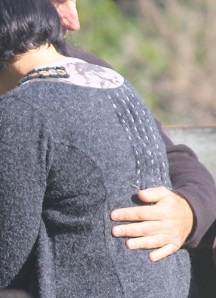Causes of Anxiety
 The first and most natural response to combating depression or anxiety may be to remove the cause; but there are problems with doing that:
The first and most natural response to combating depression or anxiety may be to remove the cause; but there are problems with doing that:
- Often the cause may not be able to be removed. If it is because a person has lost a loved one, a situation or a possession, it may be impossible to regain what has been lost. People cannot be brought back to life. Workplaces that have ceased to exist cannot reinstate old employees. Many things from the past simply cannot exist in the future. If you cannot remove it; it can still help to just identify and acknowledge the cause.
- Removing the cause, by definition, does not remove anxiety. The cause should still be removed in cases of anxiety though. If the cause continues to be present, any efforts to reduce anxiety are likely to be counteracted when the individual is confronted once again by the cause of their anxiety.
Knowing the Cause is a Start
Start by recognising that anxiety disorders have some genetic risk factors. A person has a much higher chance of developing an anxiety disorder if a first degree relative has it. However, this doesn't mean they will develop a disorder. It just means that if they have the genotype and they are exposed to the right type of stressor, they may go on to develop the disorder. There is also some suggestion that parts of the brain may be active during anxiety but that these are different for different types of anxiety disorder. It may be though that the anxiety disorder is causing the stimulation of different brain regions rather than activity in those regions is causing the anxiety.
There are also a range of psychological risk factors. For instance, anxiety states are often associated with stressful childhood experiences. Stressors in everyday life of adults can also bring about these conditions. Often, poor coping strategies and lack of suitable social support network can contribute. Specific phobias are often attributed to classical conditioning.
For instance, in a somewhat cruel experiment by today's standards (Watson & Rayner, 1920) an 11 month old boy named 'Little Albert' was exposed to a live rat. Whenever he touched the rat, at the same time a metal bar was chimed loudly behind the boy's head which startled him. Eventually after enough exposure to the rat and the chiming the boy feared the rat when it was presented to him by itself, because he associated it with the horrible noise. Many phobias are thought to have evolved in this way through associative learning.
Others for which there has been no obvious exposure may be caused by vicarious learning. That is, a person learns to become afraid by watching someone else's negative emotional response. This can explain why some people develop phobias to things they have never seen in real life.
[08/01/2026 23:10:25]
More from ACS
Directory to dozens of home study options -short courses, certificates and diplomas.